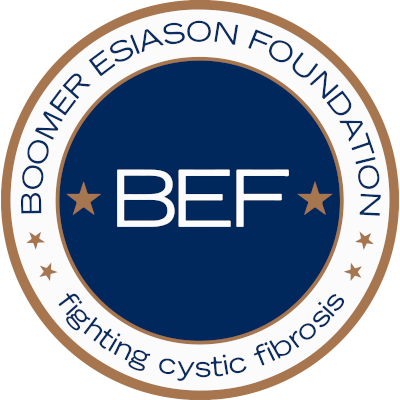Researchers at the University of Iowa’s Roy J. and Lucille A. Carver College of Medicine have discovered that in cystic fibrosis (CF) patients, the airway glands are depleted of a specific population of airway stem cells that participate in airway repair following injury.
Their results are published in the July 18 issue of Journal of Clinical Investigation.
The research team was led by John F. Engelhardt, Ph.D., Roy J. Carver Chair in Molecular Medicine and professor and head of anatomy and cell biology, and graduate student Weiliang Xie, UI Molecular and Cellular Biology Program.
Extensive research carried out on cystic fibrosis over the past two decades has firmly established that loss of a functional chloride channel called CFTR leads to chronic bacterial lung infections associated with recurrent injury and repair of the airways. One feature of the lung that helps to fight infection is the presence of airway glands, which secrete bacteria-killing factors into the airway.
These glands are also neighborhoods, or niches, for adult airway stem cells, sheltering them from toxic insults that bombard the airway surface. Without functional CFTR these glands fail to secrete these antibacterial factors, making the lung particularly susceptible to infection and to the tissue damage that accompanies it. A question about CF that remains to be resolved is whether the repair processes normally triggered by infection-associated damage remain intact in the CF lung.
The UI research team discovered that airway glands from CF humans and three CF animal models — pig, ferret and mouse — aberrantly express a “neuropeptide” that both activates CFTR and controls stem-cell responses in airway glands following lung injury. Neuropeptides are small molecules that help the nervous system direct functions in tissues. This increase in neuropeptide causes stem cells to abandon their protected glandular niches, and the airway to adapt by establishing new niches for stem cells in the more dangerous setting of the airway surface.
“This is the first demonstration that lung stem cell niches may be altered in CF,” Engelhardt said.
In their study, the researchers hypothesized that when it comes to CFTR dysfunction the nervous system may try to compensate by overproducing one of several neuropeptides. Their research shows that the neuropeptide called CGRP is excessively produced by glands in an attempt to activate CFTR, but because of the lack of CFTR activity in cystic fibrosis the CGRP signal remains on.
“Imagine the axle is broken on a car and because the driver senses he is not moving he pushes the accelerator more; when the car still doesn’t move he pushes down even further,” Engelhardt said. “Eventually the engine overheats and bursts into flames.”
In this analogy, CFTR is the broken axle, CGRP is the fuel that feeds the engine, and the central nervous system is the driver who senses that thing are not functioning properly. CF airways thus produce more CGRP in an attempt to reactive the broken CFTR channelthe untoward side effect being that this pathway also stimulates stem cells in the gland to divide.
It remains unclear why the CGRP pathway is selectively hyperactivated in the CF lung, since other neuropeptides can also stimulate CFTR. Engelhardt and Xie hypothesize that this may be due to airway-gland injury caused by the lack of CFTR, since CGRP is transiently induced even in healthy glands following injury, to spur stem cells into action.
“The future excitement of these findings relates to the potential of manipulating lung stem cells through neuropeptides or their inhibitors,” Engelhardt said. He cautioned that “the identity of lung stem cell is a matter of hot debate, and it remains unclear how the majority of functional studies we conduct in mice will translate to humans. However, given the similar findings of CGRP dysregyulation in four CF species, this pathway appears to be important in CF.”
The research team included UI researchers from the UI Carver College of Medicine and UCSF.
The study was funded in part by grants from the National Institutes of Health, and the UI Center for Gene Therapy.
Source: University of Iowa press release
